PFB Challenge #5: Grilled Poutine Pizza
 EDIT: Voting has started! Please vote for us here: http://www.foodbuzz.com/project_food_blog/challenges/5/view/1397
EDIT: Voting has started! Please vote for us here: http://www.foodbuzz.com/project_food_blog/challenges/5/view/1397
Thank you, thank you to everyone who is voting for us! We've moved on to Challenge #5 in Project Food Blog, and it's a fun one: We're challenging each of you to put your own spin on the same recipe. How you do it is up to you... You'll be asked to put your own spin on Pizza. For the purpose of this contest and challenge, we are defining pizza as having a solid base, a sauce and at least one topping.
There have been bread + sauce + topping meals throughout recorded history, and I would wager a wheel of cheese that something similar was first tried about an hour after the invention of flat bread.
Because modern pizza is figuratively (and perhaps literally) a blank canvas, the styles and varieties are endless, from early Neapolitan genesis, to New York innovation, to Chicago's extravagance. For the US, pizza is a national icon, spiced with ethnic roots and origins. Toppings vary from the patriotic Margherita, to strictly local ingredients such as Gulf shrimp, to the popular misnomer (neither pineapple nor pigs are native to Hawaii).
I love blending flavors and techniques from all over the world, so pizza is a great platform for culinary experimentation.
Part of our honeymoon was in Rome and Venice, so of course we fell in love with the varieties of Neapolitan pizza around Italy -- thin, hand shaped (and rarely round), personally sized, cooked in a hot stone oven with an oak fire. The closest we've come to reproducing this kind of pizza in the States is on our grill, so we knew that would be our "base".
For the toppings, we bounced a lot of ideas around. I was thinking of something that would be typical of a particular cuisine. Christey was thinking of something that would be drool-worthy good and outside the box. We kept coming back to potatoes as a topping, when I read a online post from one of our favorite restaurants in Tampa, The Refinery, about their poutine bar.
I wanted to do poutine pizza.
Poutine is one of those dishes that was once virtually unknown in the States outside of local hot spots, but has since started to take off nationally. In Canada, of course, there are almost as many arguments about the "correct" way to make poutine as there are arguments about cheesesteak sandwiches. Much like the pizza challenge, the basics of poutine come down to three things: French fries, preferably not too thin. Cheese, almost exclusively unaged curd. Gravy, hearty and thick and very hot.
We both love poutine, and, like the pizza crust, wanted to make something as authentic is possible given the handicap of being in Florida and not Italy or Canada. We felt the best way to do this was to make as much from scratch as possible. Which means, I needed to make cheese curd.
A very clean stainless bowl is placed on a pot with water, to act as a double boiler. Two quarts of 2% milk were added and gently heated. Cheese making is chemical and biological, much of it taking place at roughly the body temperature of mammals. The milk should be around 100F degrees, give or take a few.
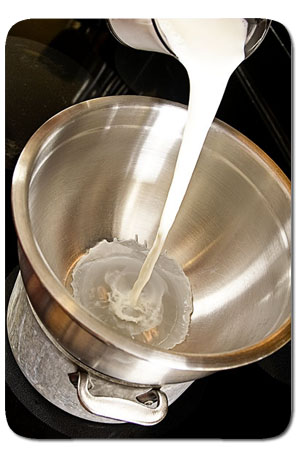
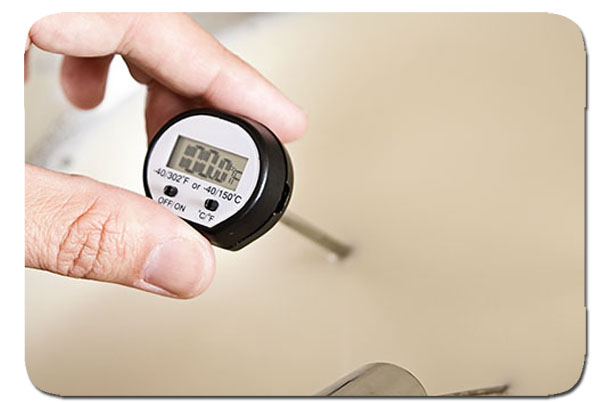
About 1/2 cup of cultured buttermilk is added. Authentic poutine uses a bacterial cheddar starter, which was unavailable. Cultured buttermilk has bacteria similar to yogurt and provides a bit of taste (though milder), and some lactic acid to help aid curdling.
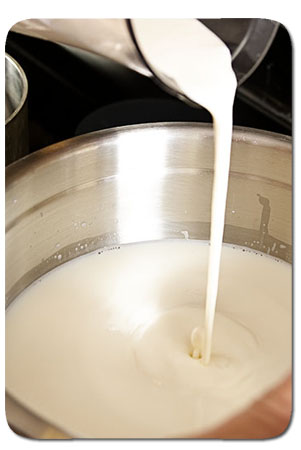
Once the buttermilk is added, a water bath is prepared to hold the bowl at a temperature of 95-100F degrees -- I removed and added more hot water every few minutes to keep the temperature in that general range.

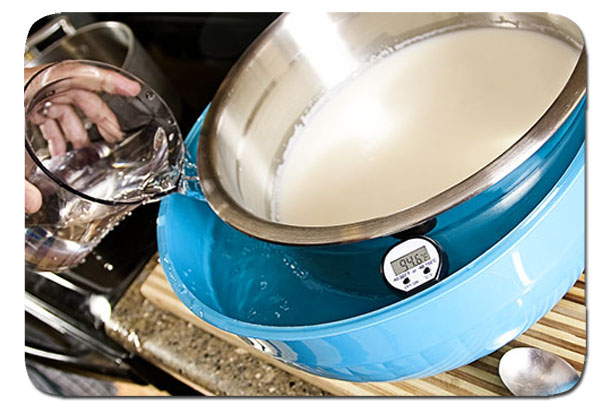
Rennet is naturally found in one of the stomach chambers of cows, sheep, and goats, which might explain the history of cheese in the first place -- animal stomachs are common nomadic containers. When rennet encounters milk, it tends to cause certain milk proteins to denature and stick together, much like runny egg whites turning solid under heat. The 1 gram packet of rennet I bought contained enough rennet for 100 liters of milk -- I had two liters in the bowl. I had to guess what 1/50th of a gram looked like. The rennet was mixed with 1/4 cup of water and thoroughly mixed into the milk:
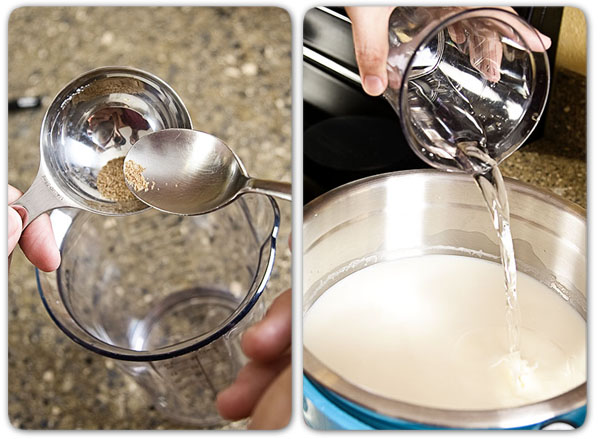
After about 45 minutes in the 95-100 degree water bath, the milk had noticeably solidified, the texture something like a loose milk pudding or almost yogurt-like. A long-bladed knife was dragged through the curds side-to-side and top-to-bottom, creating cubes about 1-2 inches wide. This helps the whey separate from the curds.
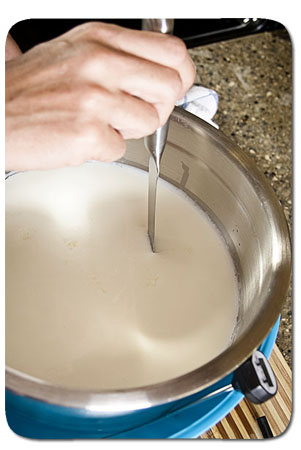
About 15-20 minutes later, the curds were lifted into a colander lined with cheesecloth, and the cheesecloth was tied into a knot on a wooden spoon and suspended over the colander to let the remaining whey drip out of the curds:
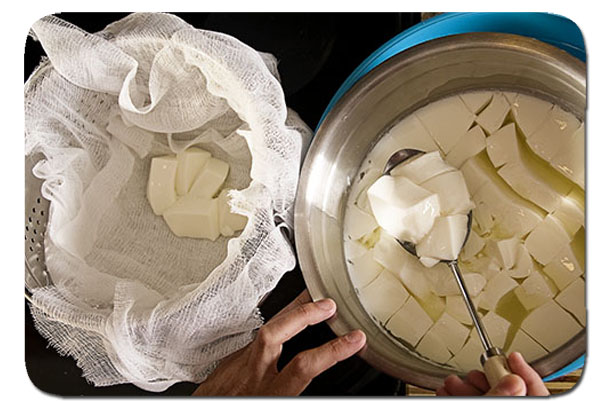
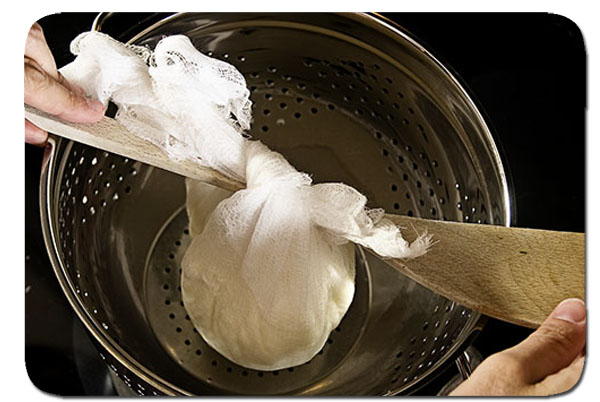
While the curds drained, it was time to start the pizza dough! I've tried a few, and for grilled pizza in our home, I've had the most success with a recipe from Alex Guarnaschelli. Although authentic Neapolitan pizza dough must be hand kneaded, I cheat and use a mixer with a dough hook (though I do form the dough by hand).
To hot water in a bowl, a packet of yeast is added, then allowed to bloom for five minutes.
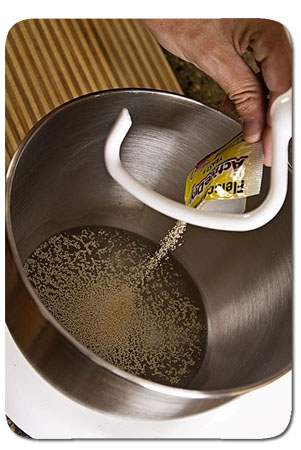
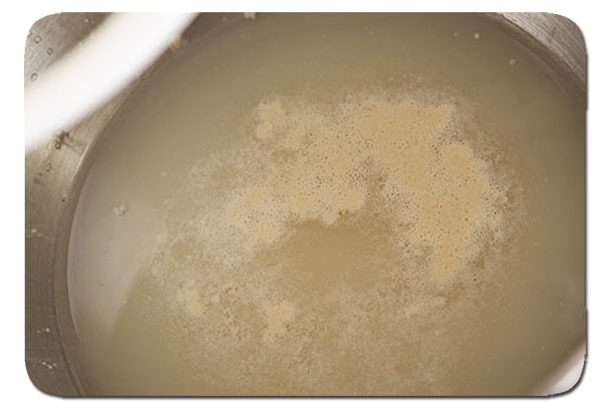
A couple cups of flour are sifted, and mixed until smooth. Two teaspoons of salt and a tablespoon of honey are added and mixed, then another cup and a half of flour is mixed in.


The mixer is turned to low and the hook kneads the dough. Glutens relax, and the dough is ready when a torn-off piece can be stretched until translucent without breaking:

The dough is formed into a ball, coated with a bit of olive oil, and left to rise.

Meanwhile, the curds have been draining a lot of whey and has slowed down, so the cheesecloth is untied, wrapped around itself, and a weight is used to press out more whey (I used a small plate and five pounds of sugar).
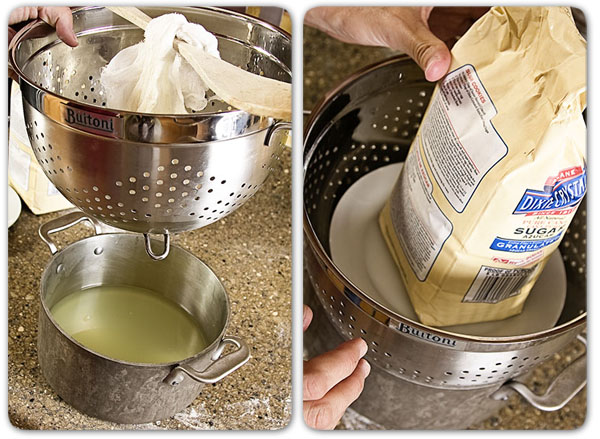
Fries are best cooked in two batches -- a low temperature blanching to cook through, then a high temperature frying to crisp up the outsides. I used my mandoline to cut a scrubbed potato into fries, and washed off some of the outside starch in cool water. They were patted dry and cooked in two batches in 300F degree oil. The fries can then be put aside until the pizza is ready to be topped.



After an hour and a half, the dough has risen quite a bit, so it's punched down on a floured cutting board and cut into four pieces. These are covered and left to rise again for about 15 minutes.

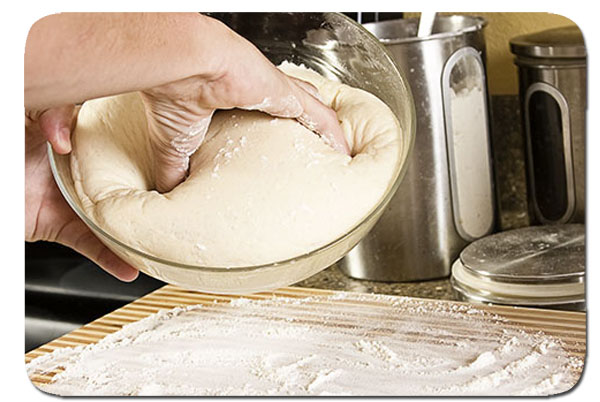
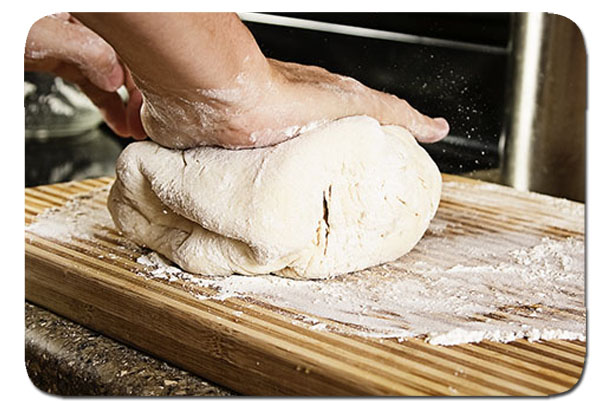

At this point, the cheese is being pressed, the fries have been blanched, and the dough is doing a quick rise, so the gravy is started. I make a roux with butter and flour, then cook it until it's a rich brown. A shallot is chopped and added, sizzling in the roux to cook and release flavor. When the shallots are soft, I add some ground pepper, then a cup of homemade beef stock I had in my freezer.
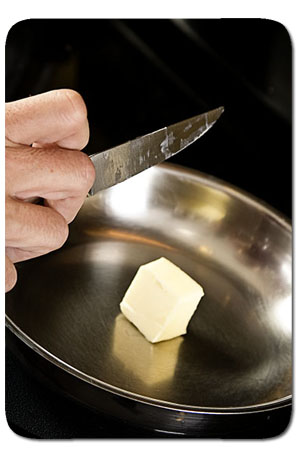
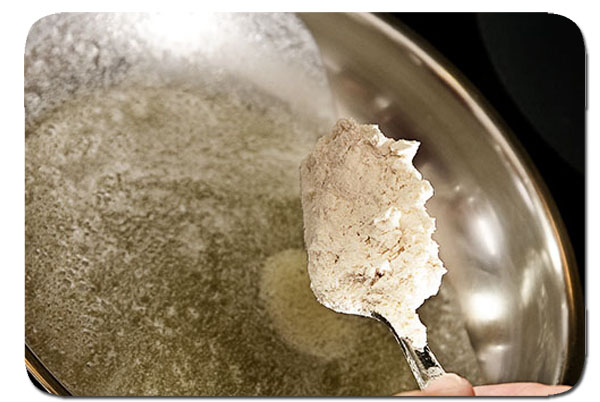

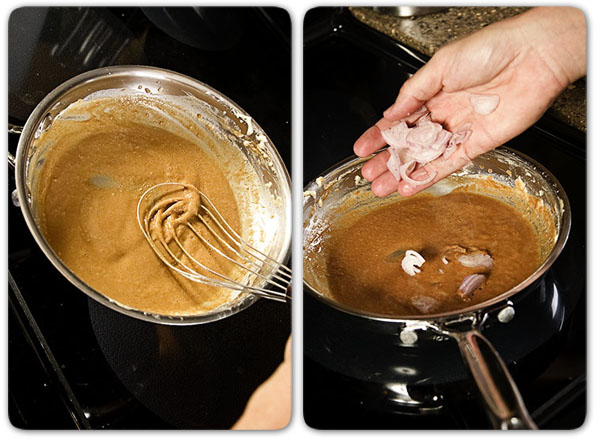

The gravy is stirred together and gets nice and thick. More fresh roux may be added if it's too thin -- roux looses thickening power the more it's browned -- and more stock or water can be added if the gravy is too thick.
The dough is ready, so a ball is roughly stretched until still a little thick on the edges, but thin in the center. I preheated my grill on high and left it closed to create a lot of heat, then turned the burners down to medium just before putting on the dough.
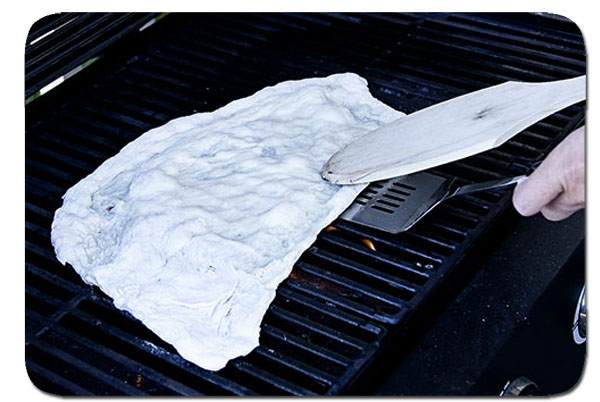
One side is cooked, then the crust is placed cooked-side-up on a floured cutting board.
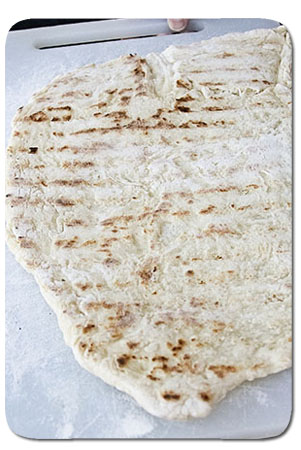
Back on the stove, I want the gravy to get a couple more layers of flavor, so I add some homemade demi-glace and a bit more butter.
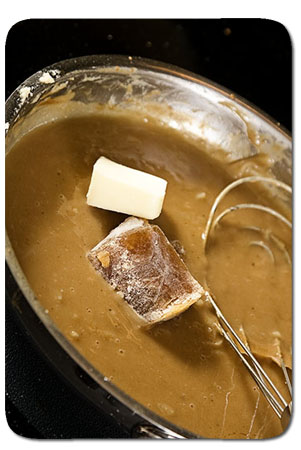
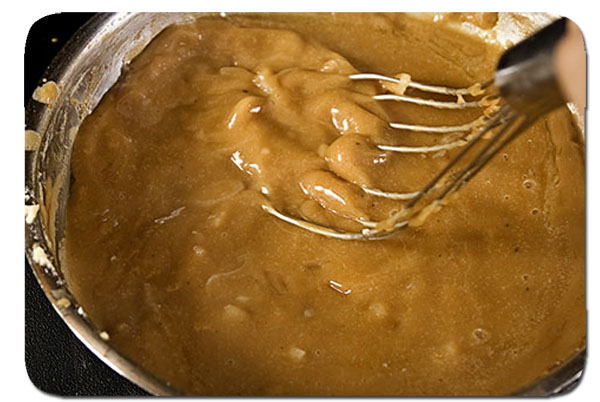
It's time to crisp the fries, so the oil is heated up to 375F, and the blanched potatoes are fried until they just barely start to brown (they'll be cooked further on the pizza).
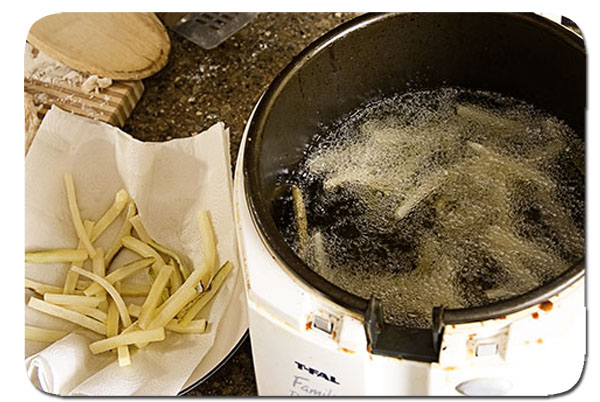
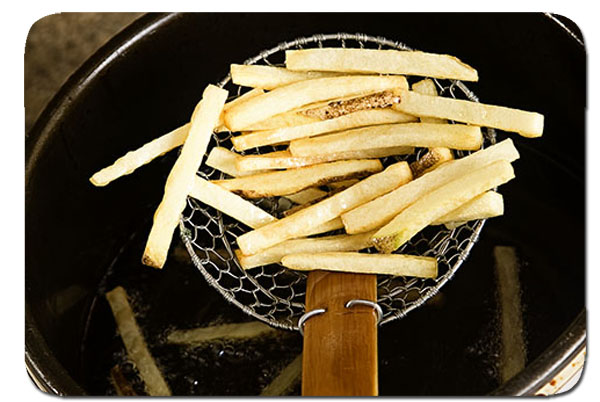
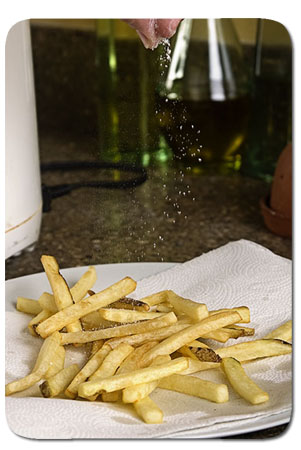
The gravy is strained to remove the shallots (they've done their job).

A little olive o brush olive oil on the crust -- to crisp it up, and act as a moisture barrier against the gravy.

The cheese is rescued from the cheesecloth.
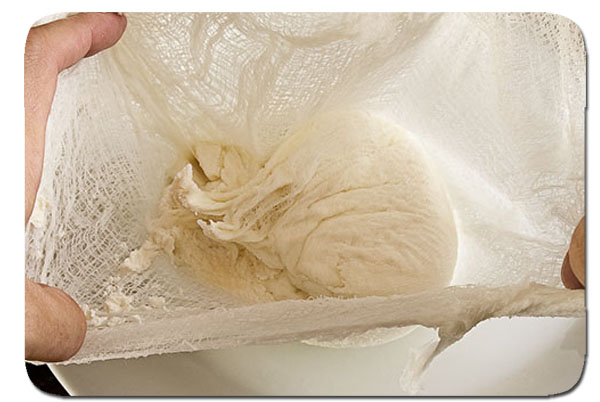
The pizza is topped with a layer of fries, gravy is spooned over the fries and crust, then the curds are scattered around the top. The fries had been lightly salted, but the sauce and cheese could use a little more, so a bit of kosher salt is sprinkled over the top of the whole pizza.
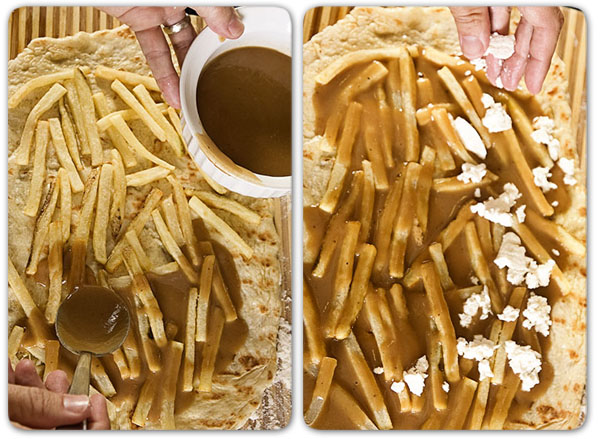
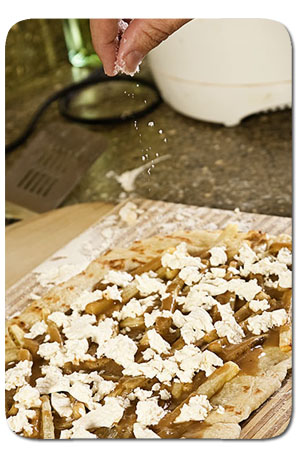
The pizza is placed back on the grill, and the burners are moved to medium-low.
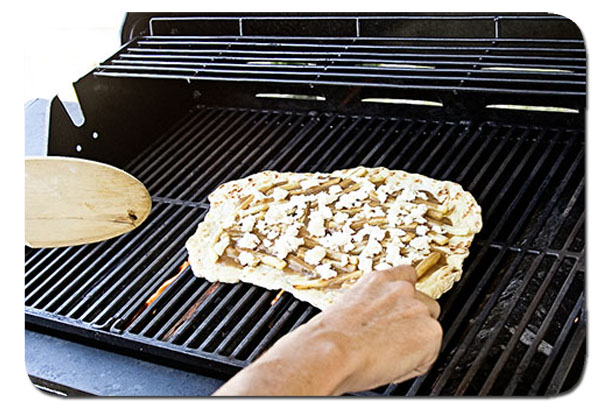
Everything bakes together -- the cheese gets warm, the edges of the fries get a little more crispy, and the gravy reduces more and spreads flavor around the whole pizza.
When done, the pizza is served with a bit more gravy to pour over the top.
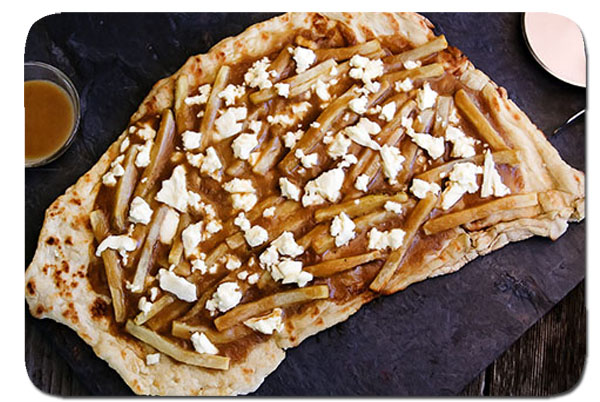
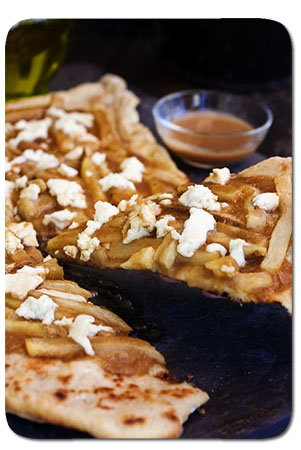
I had high hopes for this, and we weren't disappointed. It tasted like poutine -- the thick beefy gravy, the chewy curds and chunks of fries. The crust was thin and crispy with a nice smoke taste on the bottom, and actually made the poutine a little easier to eat!



